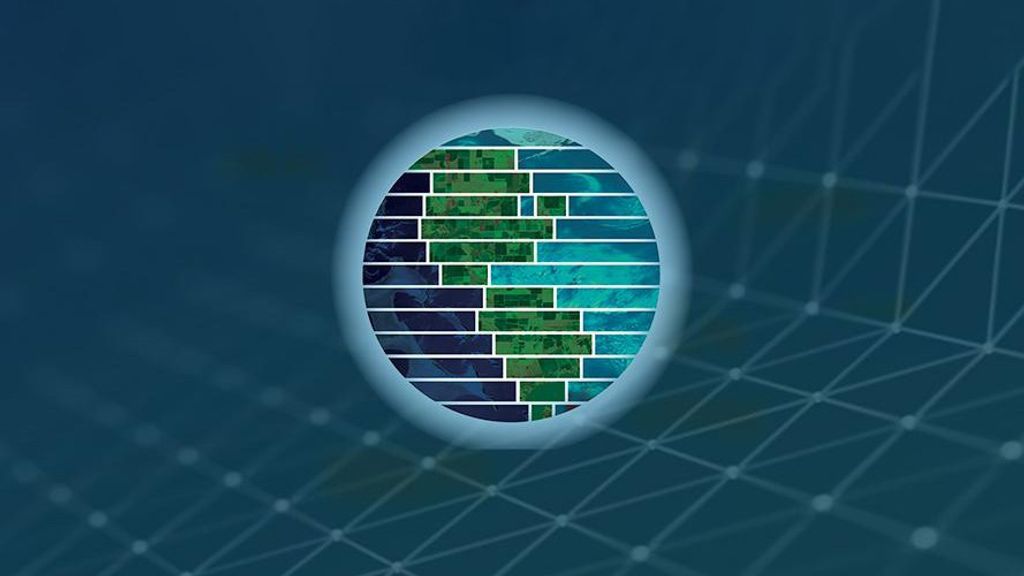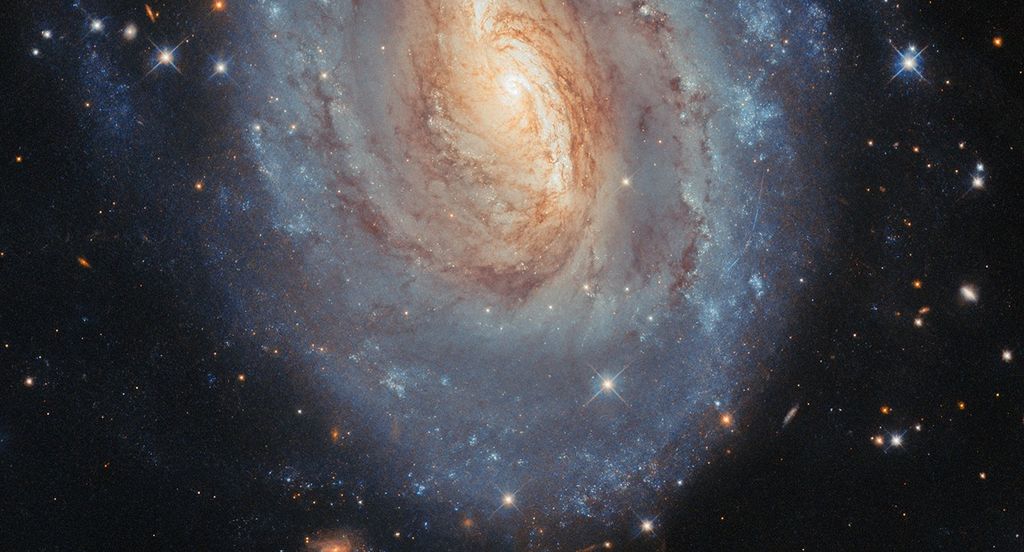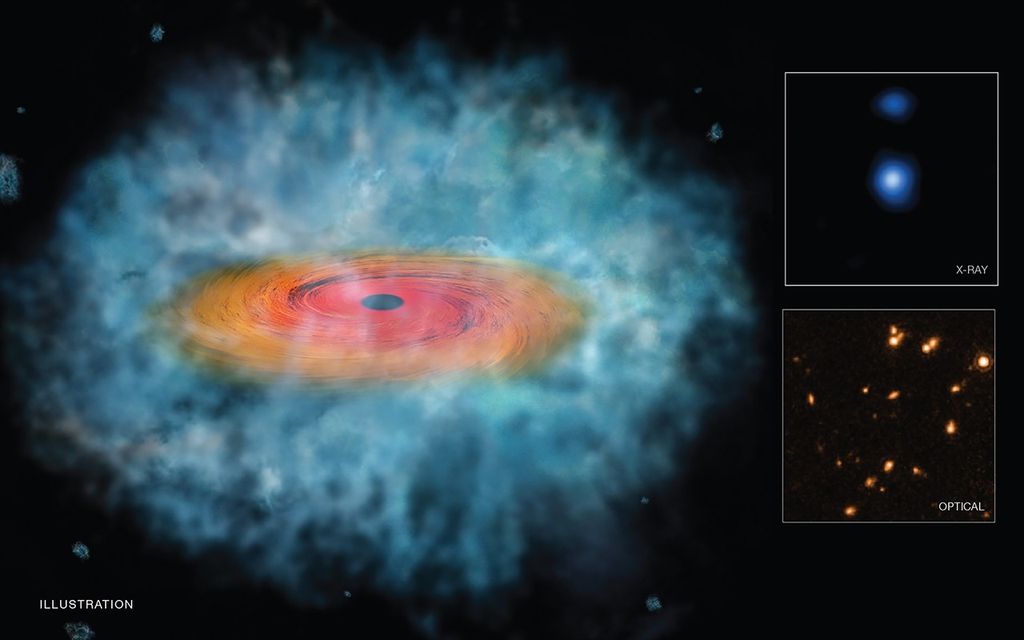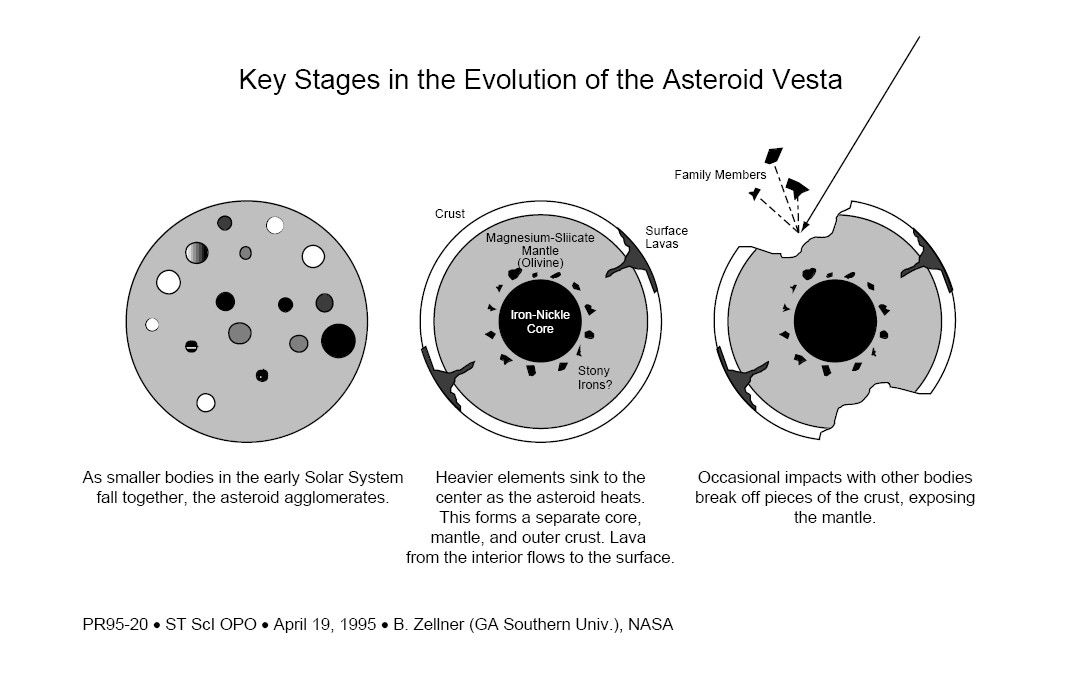1 min read
A Piece of the Asteroid Vesta
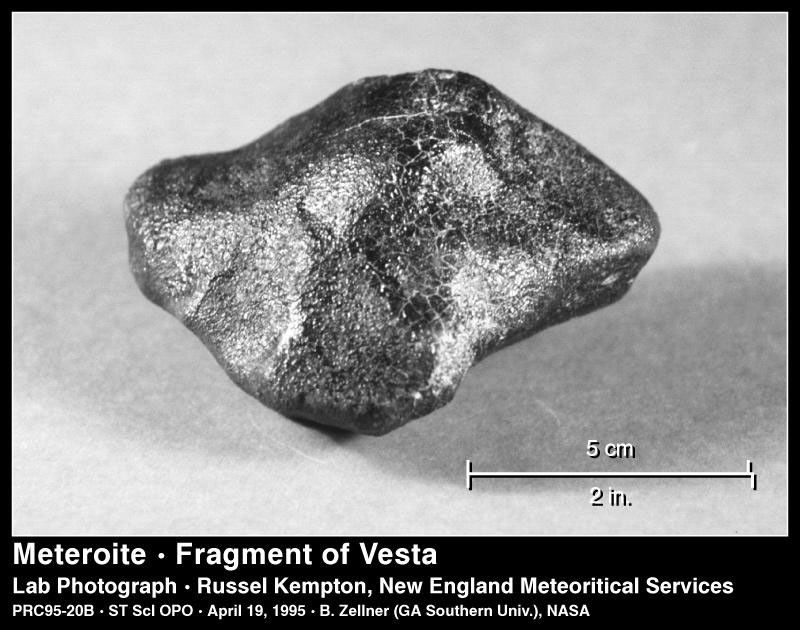
This meteorite is a sample of the crust of the asteroid Vesta, which is only the third solar system object beyond Earth where scientists have a laboratory sample (the other extraterrestrial samples are from Mars and the Moon).
The meteorite is unique because it is made almost entirely of the mineral pyroxene, common in lava flows. The meteorite's mineral grain structure also indicates it was once molten, and its oxygen isotopes are unlike oxygen isotopes found for all other rocks of the Earth and Moon. The meteorite's chemical identity points to the asteroid Vesta because it has the same unique spectral signature of the mineral pyroxene.
The meteorite also has the same pyroxene signature as other small asteroids, recently discovered near Vesta, that are considered "chips" blasted off Vesta's surface. This debris extends all the way to an "escape hatch" region in the asteroid belt called the Kirkwood gap. This region is swept free of asteroids because Jupiter's gravitational pull removes material from the main belt and hurls it onto a new orbit that crosses Earth's path around the Sun.
The meteorite probably followed this route to Earth. It was torn off Vesta's surface as part of a larger fragment. Subsequent collisions broke apart the parent fragment and threw pieces toward the Kirkwood gap and onto a collision course toward Earth. The fragment's journey ended in 1960 when it fell in Western Australia.
NASA's Hubble Space Telescope observations further confirm this scenario by revealing a giant impact basin on the 325-mile (525 km) diameter asteroid. The ancient impact was so powerful, it tore off a piece of the asteroid's crust, exposing a deeper mantle of rock.
Most of the identified meteorites from Vesta are in the care of the Western Australian Museum. This 1.4 pound (631 gm) specimen comes from the New England Meteoritical Services. It is a complete specimen measuring 3.7 inch x 3.1 inch x 3.4 inch (9.6 cm x 8.1 cm x 8.7 cm) showing the fusion crust, evidence of the last stage in its journey to Earth.
- Object NameObject NameA name or catalog number that astronomers use to identify an astronomical object.Vesta
- Release DateApril 19, 1995
- Science ReleaseAsteroid or Mini-Planet? Hubble Maps the Ancient Surface of Vesta
- CreditPhoto Credit: R. Kempton (New England Meteoritical Services)
Related Images & Videos

Hubble Follows the Rotation of the Asteroid Vesta
This is a NASA Hubble Space Telescope series of 24 images showing the full 5.34-hour rotation of the 325-mile diameter (525 kilometer) asteroid Vesta. Hubble resolves features as small as 50 miles across, allowing astronomers to map Vesta's geologically diverse terrain. The...
Share
Details
Last Updated
Aug 17, 2025
Contact
Media
Claire Andreoli
NASA’s Goddard Space Flight Center
Greenbelt, Maryland
claire.andreoli@nasa.gov









